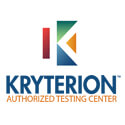Implementing Cisco IP Switched Networks (SWITCH 300-115)
About This Course
Implementing Cisco IP Switched Networks (SWITCH) is a key and qualifying exam for CCDP and Cisco CCNP Routing and Switching certifications. The training offers professionals with training to optimize and configure switched infrastructure by using HSRP, MSTP, RSTP, STP and VLANs. In addition, professionals will be taught to secure switched infrastructure. Most importantly, Implementing Cisco IP Switched Networks (SWITCH) training course prepares you for SWITCH 300-115 exam.
The course trains you to build scalable and multilayer switched networks, deploy and create global intranets and execute troubleshooting in enterprise IT environments using Cisco switches (multilayer) for client services and hosts. The coursework spans across basic network design, switching concepts, network architecture, etc. followed by in-depth understanding of inter-VLAN routing, network management, advance switch features, network security, etc.
Implementing Cisco IP Switched Networks (SWITCH) is a job-oriented Cisco certification aimed at network engineers to help them attain industry grade knowledge and expertise in networking. The course is highly beneficial to students who wish to boost their knowledge on networking.
Who Should Attend This Course
Implementing Cisco IP Switched Networks (SWITCH) is ideal for:
- Network experts
- Network engineers
- Students who wish to prepare for SWITCH 300-115 exam
Why This Course
As we know that Cisco is one of the pioneers in networking, a Cisco certification is sure to help you stand out from the crowd when it comes to job and growth prospects. Cisco powers networking groundwork countless service providers spanning from educational institutions to federal agencies/corporations. Cisco routes 85% of the entire world’s Internet traffic.
After completing the Implementing Cisco IP Switched Networks (SWITCH) course, you will be able to:
- Prepare for topics covered in SWITCH 300-115 exam.
- Describe basic switch operation, hierarchical campus infrastructure
- Implement explain VTP, trunks, VLANs and implement DHCP in IPv6 and IPv4 environments
- Optimize and implement STP mechanism
- Configure routing over multilayer switches
- Configure SNMP, port mirroring, IP SLA, NTP and verify VSS and StackWise operation
- First Hop redundancy in IPv6 and IPv4 environments
- Secure campus networks
- Learn about basic switching concepts and terminologies
- Learn about Cisco catalyst switch types
- Understand port-channeling and spanning tree
Course Objectives
- Verify and configure switch administration
- Verify and configure Layer 2 protocols
- Verify and configure VLANs
- Verify and configure trunking
- Verify and configure EtherChannels
- Verify and configure spanning tree
- Verify and configure LAN switching technologies
- Describe aggregation technologies and chassis virtualization
- Verify and configure switch-security features
- Device security using Cisco IOS
- Infrastructure Services
Course Prerequisites
Skills and knowledge you must possess before enrolling for this course are:
- Describing network basics
- Establishing WAN and Internet connectivity (IPv6 and IPv4)
- Managing security on network devices
- Operating medium-sized LANs with multiple switches, trunking, spanning tree and supporting VLANs
- Troubleshooting IPv6 and IPv4 connectivity issues
- Troubleshooting and configuring OSPF and EIGRP (IPv6 and IPv4)
- Configuring devices for syslog, NetFlow and IPv4 access
- Managing configurations for Cisco devices, IOS images and licenses
Course Benefits
After completing the Implementing Cisco IP Switched Networks (SWITCH) course, you will be able to:
- Prepare for topics covered in SWITCH 300-115 exam.
- Describe basic switch operation, hierarchical campus infrastructure
- Implement explain VTP, trunks, VLANs and implement DHCP in IPv6 and IPv4 environments
- Optimize and implement STP mechanism
- Configure routing over multilayer switches
- Configure SNMP, port mirroring, IP SLA, NTP and verify VSS and StackWise operation
- First Hop redundancy in IPv6 and IPv4 environments
- Secure campus networks
- Learn about basic switching concepts and terminologies
- Learn about Cisco catalyst switch types
- Understand port-channeling and spanning tree





























